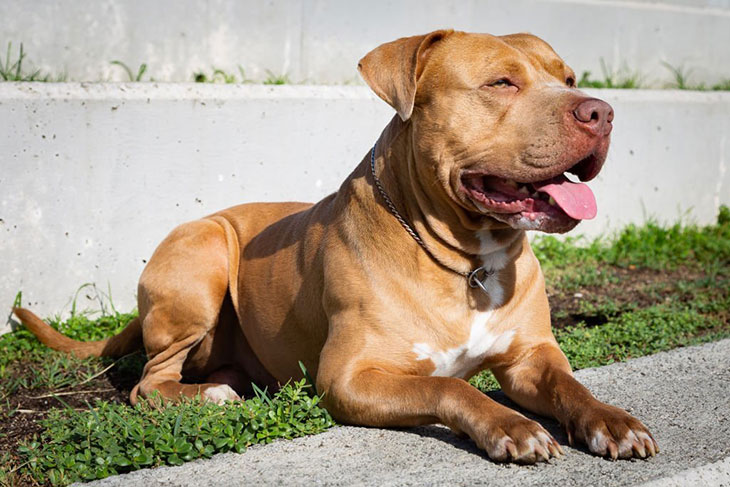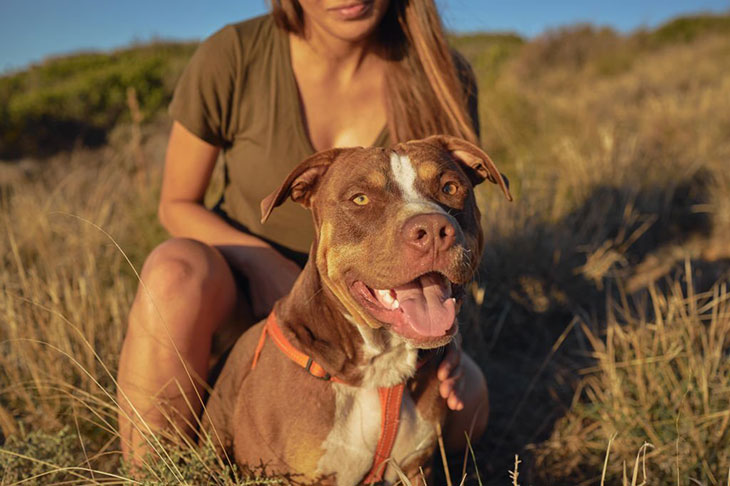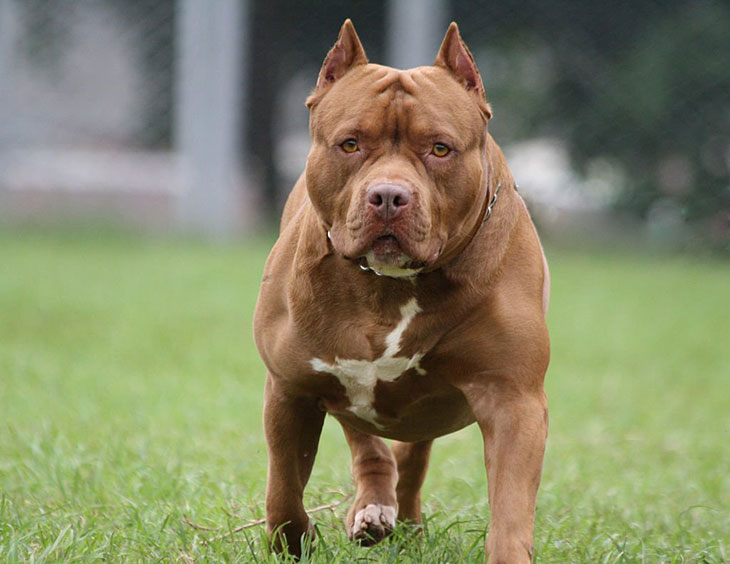Did you know pit bulls have a shorter lifespan than other dog breeds?
This is why dog parents who own these bull dogs want to be aware of the common causes of death in pit bulls to eliminate them if possible and ensure their pets’ presence in their lives for as long as possible.
Read until the end to discover some silent killers and proven caring tips.
What Are The Common Causes Of Death In Pit Bulls?

Car accidents, trauma, age-related illnesses, heart disease, kidney disease, aortic stenosis, valve malformations, cancer, genetic disorders, obesity-related issues, infections, aggression-related incidents, etc., are the most popular reasons for the fatality of pit bulls.
Car Accidents
What do pit bulls usually die from? Based on my experience, I must say that car accidents are the primary cause.
Pit bulls can face serious injuries or death when they wander the road and get hit by cars.
Additionally, their size and strength can make it challenging to control them if they escape, increasing the likelihood of such incidents.
Trauma
Trauma can significantly reduce a dog’s lifespan, whether from car accidents or animal attacks.
It is because trauma can lead to severe injuries like broken bones or internal bleeding, ultimately resulting in the unfortunate loss of the pet forever.
Some of the signs of dog trauma pit bull owners should pay attention including:
- Sudden changes in behavior: being afraid, aggressive, or withdrawn.
- Physical symptoms: shaking, panting, or hiding.
- Changes in eating or sleeping habits: eat or sleep less than usual or have trouble sleeping through the night.
- Avoidance of certain people or places
- Destructive behavior: chewing on furniture or other objects, barking, or whining more than usual.
Age-related Illnesses
As pit bulls get older, they can be more prone to illnesses.
Dogs can develop conditions such as arthritis, dementia, and organ failure as they age. These illnesses can leave pain and discomfort, eventually putting an end to its lifespan.
Here are some of the signs of arthritis, dementia, and organ failure in pit bulls:
Arthritis
- Stiffness in the joints: have trouble getting up or down or are reluctant to walk or run.
- Pain: cry or whine when they move or lick their joints excessively.
- Decreased activity level: not wanting to play as much as they used to or may be more likely to sleep.
- Weight gain
Dementia
- Changes in behavior: more aggressive, wandering, or getting lost.
- Personality changes: become more clingy or demanding, or seem less interested in things they used to enjoy.
- Changes in memory: have trouble remembering where they are or forget their name or other commands.
- Organ failure.
- Changes in eating or drinking habits.
- Weight loss.
- Changes in energy levels: more tired or lethargic or have trouble breathing.
- Yellowing of the skin or eyes.
Heart Disease
Pit bulls can develop conditions like congestive heart failure or heart murmurs that affect the proper functioning of their hearts.
Several things, including genetics, diet, and exercise, can trigger it. As a result, it leads to a higher mortality rate among pit bulls.
Some of the signs of heart disease in dogs:
- Trouble breathing: especially when they are active or excited.
- Coughing: especially when they are lying down or after they exercise.
- Swelling in the legs: especially if they lie down for a long time.
- Pale gums: especially if they are not getting enough oxygen.
- Weakness or fainting: especially if they are exercising or excited.
Kidney disease
Pit bull breeds, and even pit bull mixes are also susceptible to serious and life-threatening kidney disease.
This disease can affect the kidneys’ ability to filter waste, like toxins build up in the blood from the body, creating complications and potentially shortening their lifespan.
Some signs of kidney disease that pit bull owners should know are:
- Drink more water than usual.
- Urinate more often than usual.
- Often lose weight.
- Become lethargic.
- May vomit.
- Diarrhea.
- The gums of dogs may appear pale.
Aortic Stenosis
Aortic stenosis is when the heart’s important blood vessel, called the aorta, becomes narrow or blocked. It is the most common heart disease for pits.
The disease can make it more difficult for the blood to flow properly, which provokes problems for pit bulls and potentially shortens their lifespan.
Signs of aortic stenosis in pets:
- Coughing.
- Fatigue: tired or sluggish, especially after exercise.
- Irregular heartbeat: The heart beating irregularly.
- Pale gums.
Valve Malformations

It refers to abnormalities in the valves of the heart. Pit bulls can be born with these malformations, which can disrupt the normal flow of blood and put additional strain on the heart.
Therefore, it is more likely that the valve is leaked or not closed properly, leading to heart failure and ultimately impacting their longevity.
Certain indications of pits having valve malformations:
- Stunted growth.
- Exercise intolerance.
- Coughing.
- Swelling in the legs.
- Pale gums.
- Fainting.
Cancer
What is the most common cause of dog death? The answer must be incomplete if not mentioning cancer.
Dogs can develop different types of cancer, such as skin cancer or tumors in various organs. Besides, the most popular types of cancer in pit bulls are mast cell tumors and melanoma.
It can be aggressive and difficult to treat, significantly affecting a pit bull’s lifespan.
Some cancer signs you can notice as:
- A lump or bump.
- Weight loss.
- Changes in appetite.
- Changes in energy levels.
- Changes in behavior.
- Pain.
Genetic Disorders (Congenital Deformities and Abnormalities)
What could cause sudden death in a dog? When I come to a pet conference, some vets share that genetic disorders can be the culprit.
Various health problems might arise, including heart defects, neurological disorders, and eye problems.
These inherited conditions entail other health complications throughout their lives.
As a dog’s parent, you can observe some signs:
- Physical changes: deafness, blindness, or unusual skin or coat.
- Behavioral changes: aggression, anxiety, or seizures.
- Health problems: heart disease, cancer, or diabetes.
Obesity-related Issues
Obesity is a condition in which a dog carries excess body weight. Pit bulls are prone to being overweight if they are not given a balanced diet and regular exercise.
Many health problems can follow, such as joint issues, heart disease, diabetes, and even cancer, all of which can contribute to a shorter lifespan.
Some indications of obesity:
- Your dog is too big.
- Your pet is tired all the time.
- Your cane has trouble breathing.
- Its skin is red or irritated. Obese dogs are more likely to develop skin problems like hot spots and yeast infections.
- Your dog has trouble getting up or down. Obesity can make it hard for canines to move around. They may have trouble getting up from a sitting position or getting down from a bed or couch.
Infections
Infections, such as bacterial (sepsis, pneumonia, infected urinary tract) or viral infections (rabies, distemper, parvovirus), or fungal infections (yeast or ringworm infections) are common health issues.
These infections can weaken their immune system, make them more susceptible to other illnesses, and significantly impact their lifespan.
Some indicators of infections are:
- Fever.
- Pain.
- Redness or swelling.
- Loss of appetite.
- Diarrhea or vomiting.
- Changes in behavior.
Aggression-related Incidents
Aggression-related incidents are a less common cause of death in pit bulls, but they can happen.
If your dog displays aggressive behavior and fights or attacks, it can injure themselves or others. Such incidents can end up with legal consequences or even euthanasia.
Therefore, you should learn how to stop pups from fighting to protect your pet better.
Neoplastic Conditions
Neoplastic conditions refer to the growth of abnormal tissue masses, commonly known as tumors.
Your dog can develop different types of tumors, both benign (non-cancerous) and malignant (cancerous). These tumors can wreak havoc on various organs and bodily functions.
Ultimately, they might not live as long. Some signs you can find out about the conditions are:
- A lump or bump.
- Start losing weight.
- Start eating more or less than usual.
- Become more tired or lethargic.
- Get more aggressive or withdrawn.
- Start bleeding or have discharges from their eyes, nose, or mouth.
- Cry or whine when touched, or they may lick or chew at a certain area of their body, like biting their tail until it’s bleeding.
Neurologic diseases
Neurologic diseases are groups of diseases that affect your dog’s nervous system.
These diseases can include epilepsy, spinal disorders, or degenerative conditions that affect the brain or spinal cord.
It accompanies some symptoms, including seizures, paralysis, and loss of consciousness, which can draw your pet’s last breath if not treated properly.
Some symptoms of neurologic diseases pet owner needs to know:
- Stumbling, lack of balance, or coordination.
- Shaking of the head.
- Persistent trembling.
- Dragging of the paws.
- Darting or “flickering” eyes (nystagmus).
- Changes in behavior.
- Changes in vocalizations.
What Is The Life Expectancy Of A Pitbull? & How To Care For Your Pitbull?

Life Expectancy
The life expectancy of a Pitbull can vary, but on average, they can live between 10 to 15 years. Some Pitbulls may live longer with proper care and a healthy lifestyle.
How To Care For Your Pitbull?
- To create a happy life for your pits, feed them a healthy diet.
Pitbulls are prone to obesity, so feeding them a healthy diet low in fat and calories is important. Give good-quality and fresh water to them every day.
- Give them plenty of exercise. Pitbulls are active dogs, so they need plenty of exercise to stay healthy. Take them for daily walks, play games, and allow them to run and play.
- Take them to the vet for regular checkups. They are essential for your pit bull’s health.
Ensure they receive necessary vaccinations and preventive treatments for fleas and ticks, get deworming properly, and have regular checkups to catch any potential health issues early.
It will help to catch any health problems early on.
- Train them properly. Pitbulls are intelligent dogs, but they can be stubborn. It is important to train them properly so that they behave well.
- Grooming is another part of caring for your bull dog. Brush their coat regularly to keep it clean and free of tangles. Also, remember to trim their nails and clean their ears as needed.
- Give your four-legged friend lots of love, attention, and socialization.
They thrive on human companionship, so spend quality time with them, train them using positive reinforcement techniques, and provide them with a safe and loving environment.
That is everything you can do for your pet to support them in leading a healthy life.
FAQs
What Percentage Of Dog Attacks Are Pitbulls?
66%. It is the number from the World Animal Foundation sharing the statistics of American deaths as a direct result of dog attacks from 2005 to 2019.
Are Pitbulls Statistically More Dangerous?
It is difficult to say whether pitbulls are statistically more dangerous than other healthy breeds. There is no clear consensus on this issue and a lot of conflicting data.
Some studies have shown that pitbulls are more likely to bite than other breeds, while others have shown no difference.
What Do Available Statistics And Data Indicate Regarding The Comparison Of Pitbull Attacks Vs Other Breeds?
A study by the American Temperament Test Society found that pitbulls have a passing rate of 86.7%, which is higher than the average passing rate of 82.5% for all breeds.
It suggests that pitbulls are not inherently more aggressive than other breeds.
Another study by the Centers for Disease Control and Prevention found that pitbulls were responsible for 66% of all dog-related deaths in the United States from 2005 to 2017.
However, this study did not consider that pitbulls are also the most popular dog breed in the United States.
Conclusion
That is all the deets about common causes of death in pit bulls. As you can see, they are a lot. But with well-care and regular checks with experts, they can live the fullest life with you.
Plan a schedule to exercise with them, give them proper training, and all the love you can.
